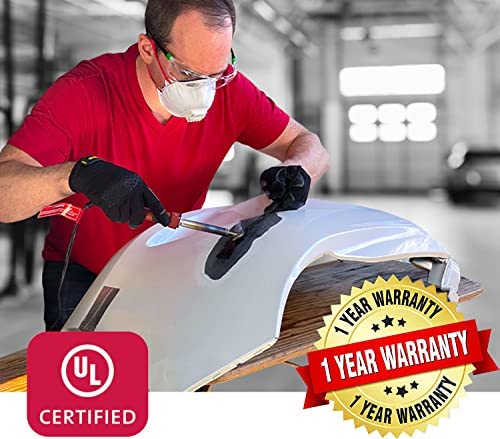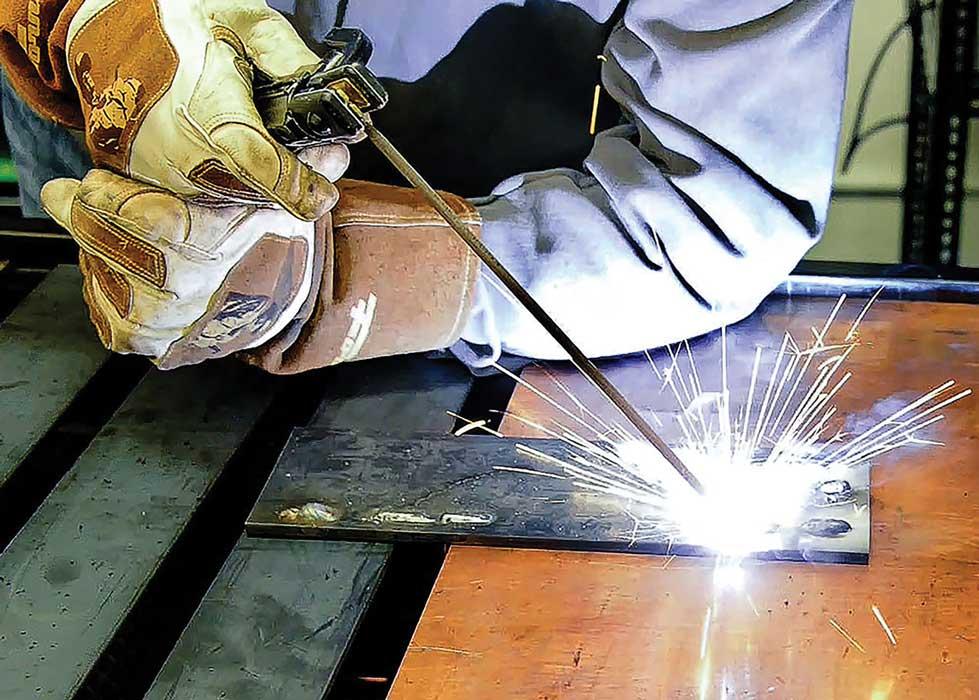Understanding cracking in welds and how Montana Mobile Welding and Repair Belgrade Welding solves it
Usual Welding Repair Issues and How to Address Them Properly
Welding repair services usually experience a variety of problems that can threaten the stability of the end product. Common problems include inadequate infiltration, porosity, and imbalance, amongst others. Each problem presents one-of-a-kind challenges that require specific methods for resolution. Recognizing these issues is crucial for welders aiming to boost their skills and results. This discussion will discover these common welding repair issues and reliable techniques to address them.
Insufficient Infiltration
Poor penetration takes place when the weld steel stops working to fully fuse with the base material, leading to weak joints and potential structural failures. This concern often originates from insufficient warmth input, inaccurate electrode angle, or improper welding rate. Welders may experience inadequate infiltration due to a mistake of the necessary criteria for a specific material thickness or type. Additionally, contamination on the base material's surface area can impede effective bonding, exacerbating the issue. To attend to inadequate penetration, welders need to ensure appropriate setups on their tools and keep a clean job surface area. Normal inspection of welds is recommended to recognize any kind of shortages early, permitting timely corrections and the avoidance of endangered architectural stability in bonded settings up.
Porosity
Porosity is a common problem in bonded joints that manifests as tiny gas bubbles entraped within the weld metal. This defect can jeopardize the stability of the weld, bring about minimized toughness and possible failure under tension. Montana Mobile Welding and Repair Belgrade. Porosity generally occurs from contamination, dampness, or incorrect welding methods, which permit gases to run away into the molten weld pool. To deal with porosity, welders need to ensure proper surface prep work, preserve a tidy working setting, and make use of appropriate welding specifications. Furthermore, selecting the right filler product and shielding gas can reduce gas entrapment. Routine assessment and testing of welds can assist identify porosity early, assuring timely restorative actions are taken, consequently preserving the high quality and dependability of the bonded framework
Misalignment
Imbalance in welding can arise from various elements, consisting of inappropriate arrangement and thermal growth. Recognizing the source is necessary for effective resolution. Numerous modification techniques are offered to realign components and ensure architectural honesty.
Sources of Imbalance
Welding misalignment often comes from a range of underlying issues that can jeopardize architectural integrity. One key reason is improper fit-up of components before welding, which can lead to gaps and uneven surface areas. Variations in thermal growth throughout the welding process can additionally result in distortion, particularly if the products being joined have various coefficients of expansion. Furthermore, inadequate clamping and fixturing might stop working to hold parts securely in position, bring about movement during welding. Poorly conserved tools, including welding devices and devices, may present variances in the weld bead, more adding to misalignment. Finally, driver mistake, stemming from inadequate training or experience, can likewise play a significant duty in creating misaligned welds.
Modification Techniques Offered
Resolving misalignment properly needs a mix of rehabilitative strategies tailored to the particular problems available. One usual method is making use of fixtures or jigs to hold elements in the right position during welding, guaranteeing consistent positioning. Furthermore, pre-heating the materials can help in reducing distortion and enhance fit-up. For considerable misalignment, mechanical adjustment methods, such as making use of hydraulic jacks or clamps, can be employed to fix the position before welding. Post-weld warm treatment might additionally be needed to ease stresses triggered by imbalance. Finally, cautious evaluation and change throughout the setup phase can prevent imbalance problems from becoming significant troubles, advertising a smoother welding process and boosting overall structural integrity.
Distortion
Distortion is a common obstacle in welding that can develop from numerous aspects, including irregular heating and air conditioning. Recognizing the sources of distortion is essential for carrying out effective avoidance strategies. Addressing this issue not only improves architectural integrity but additionally boosts the total quality of the weld.
Root causes of Distortion
When subjected to the extreme warmth of welding, products typically undergo changes that can bring about distortion. This sensation mostly develops from thermal development and tightening throughout the welding process. As the weld location warms up, the product broadens; upon air conditioning, it acquires, which can produce interior stresses. Furthermore, uneven home heating throughout a work surface can intensify these tensions, causing warping or bending. The sort of material also plays a substantial duty; metals with varying thermal conductivity and coefficients of growth might react differently, leading Bonuses to unpredictable distortions. Furthermore, inadequate joint style and inadequate fixturing can add to imbalance throughout welding, boosting the likelihood of distortion. Comprehending these causes is essential for efficient welding repair service and prevention strategies.
Prevention Techniques
Reliable avoidance strategies for distortion during welding concentrate on controlling heat input and making certain correct joint layout. Maintaining a constant heat input assists to lessen thermal growth and tightening, which can cause distortion. Using strategies such as pre-heating the workpiece can also lower the temperature slope, advertising uniform home heating. In addition, picking suitable joint layouts, such as T-joints or lap joints, can enhance security and minimize tension focus. Carrying out appropriate fixturing to protect the workpieces in area even more help in maintaining positioning during the welding process. Staggered welding sequences can disperse heat much more uniformly, stopping local distortion. By using these techniques, welders can greatly decrease the likelihood of distortion and boost the total top quality of their welds.
Splitting
Cracking is an usual problem come across in welding repair services, commonly arising from various elements such as improper air conditioning rates, material choice, or poor joint preparation. The incident of splits can substantially jeopardize the honesty of the weld, resulting in prospective failings during procedure. To address this issue, welders need to first analyze the source, making certain that products are compatible and suitably picked for the details application. In addition, regulating the air conditioning price throughout the welding process is essential; quick air conditioning can generate stress and lead to breaking. Proper joint style and preparation also add to decreasing the danger. Executing these techniques can enhance weld high quality and resilience, eventually decreasing the likelihood of cracking in ended up weldments.

Incomplete Combination
A significant problem in welding repair work is incomplete fusion, which happens when the weld steel does not sufficiently bond with the base material or previous weld passes - Montana Mobile Welding and Repair Belgrade Fabrication. This issue can lead to weak points in the joint, possibly compromising the stability of the welded framework. Variables adding to incomplete combination include inadequate warm input, inappropriate welding strategy, and contamination of the surface areas being joined. To address this concern successfully, welders must guarantee proper pre-weld cleaning and surface area preparation, along with change their welding criteria to accomplish sufficient penetration and blend. Routine inspection during the welding procedure can also assist determine incomplete fusion early, enabling timely restorative procedures to enhance content the overall quality of Read More Here the weld
Overheating
While welding repair work can boost structural integrity, overheating offers a significant difficulty that can lead to product deterioration. Extreme heat throughout welding can alter the mechanical buildings of steels, leading to decreased stamina, enhanced brittleness, and warping. This sensation is particularly essential in high-stress applications where architectural dependability is paramount. Identifying getting too hot can entail aesthetic examinations for discoloration or distortion, as well as keeping an eye on temperature throughout the welding process. To reduce the risks connected with getting too hot, welders must utilize appropriate methods, such as managing warm input, adjusting travel rate, and utilizing appropriate filler products. In addition, implementing pre- and post-weld heat treatments can help recover product buildings and improve the total top quality of the repair work, making sure lasting efficiency and security.
Often Asked Concerns
What Are the Common Indications of a Welding Issue?

How Can I Examine My Welds for Top quality?
To check welds for high quality, one can make use of visual evaluations, ultrasonic testing, and radiographic methods. Each method ensures architectural stability, determines problems, and confirms adherence to defined standards, ultimately improving the reliability of the bonded joints.
What Security Preventative Measures Should I Take While Welding?
When welding, one must prioritize safety by putting on ideal individual safety devices, guaranteeing correct ventilation, safeguarding combustible products away, keeping a tidy office, and being aware of environments to stop injuries and crashes.
Can I Fix a Weld Without Remodeling the Entire Joint?
Repairing a weld without redesigning the whole joint is possible, depending on the damages (Belgrade Welding). Strategies such as grinding, including filler product, or using a welding procedure can successfully address particular defects while protecting the surrounding framework
What Equipment Are Necessary for Reliable Welding Fixes?
Necessary tools for effective welding repair services include a welding device, cable brush, grinder, safety gear, clamps, and filler materials. Each tool plays an essential function in making certain quality and safety and security during the repair work process. Porosity normally occurs from contamination, dampness, or inappropriate welding techniques, which permit gases to get away into the liquified weld pool. Inadequately kept equipment, consisting of welding makers and devices, might introduce variances in the weld bead, more contributing to misalignment. When subjected to the extreme warmth of welding, materials commonly undertake modifications that can lead to distortion. Splitting is an usual issue experienced in welding repair work, typically resulting from numerous factors such as inappropriate cooling prices, material selection, or insufficient joint preparation. A significant concern in welding fixings is insufficient blend, which happens when the weld steel does not sufficiently bond with the base material or previous weld passes.